#icelandic folk tales
Text

you'll NEVER guess what my favourite eurovision 2024 song is
youtube
#ι don't like how this looks but whatever ULVEHAM PROPAGANDA#mine#hws norway#hetavision#maia talks esc#new tag !!#additional context for whoever is curious#the song is based on norwegian folk tales and it's about a maiden who is transformed into a wolf by her stepmother#and she needs to drink her brother's blood to become human again#(so iceland is probably dead)#also the song uses vocalizations based on a traditional norwegian way of singing that's used to herd sheep#that's why he has the shepherd's staff :)
60 notes
·
View notes
Text







Male ice fairies (ice kings) ❄️🧚🏻
https://www.tiktok.com/@spiritsurfers/video/7364891291223706898
#fantasycore#spirituality#spiritualgrowth#fairy tale#spiritual awakening#fae#fairycore#faerie#fairies#fairy aesthetic#fairy#fairy kei#fairy tail#fairy tales#fairy art#fae folk#faecore#faery#fey#snow#winter#iceland#frozen#kristoff#frozen 2#frank sinatra#henry cavill#zac efron#rob lowe#james marsden
3 notes
·
View notes
Text
Strong seawomen

You can read more about Iceland's seawomen here!
"Born in 1829, Ísafold Runólfsdóttir grew up on a remote farm in East Iceland near present-day Vopnafjördur. From a family celebrated for their singular strength, Ísafold was known as the best and strongest of the bunch. She was so renowned for her strength that she became part of the folk history of the area, with accounts of her taking on the form and style of the traditional Icelandic narrative tales. She is described as very intelligent, tall, broad-shouldered, handsome with a firm expression, bold, eager in her work, unsparing in her words, unafraid to speak her mind (her language sometimes a bit crass) and overall considered a hero both at sea and on land.
Ísafold went to sea when she was “very young,” first rowing with her father Runólfur. Fishing became her main source of income. She often went out alone, and only the “hardest workers could hope to match her.” As with so many of the seawomen in the historical record, it was not so much for her fishing that Ísafold is remembered but for her personality and phenomenal strength. This included her ability to pull her heavy wooden boat ashore alone—an unheard-of feat. One young seaman recalled that once, when the boat was getting in danger upon encountering rough waves as they neared shore, Ísafold jumped from the boat into the waves, grabbed him, and then tossed him with such a throw that he landed safely on shore. Then she dragged the boat ashore after her. Another account describes how, when unloading hundred-pound bags from the boats with the men, who carried one bag each, Ísafold would often remark, “Well, you are not so strong,” and grab two bags, one in each hand.6 Some speculated that it was the fish oil she took religiously that aided her famous strength—but that she was stronger than almost anyone else, man or woman, was undisputed.
Ísafold also had exceptional skill and strength at a wrestling and martial art form called glíma. Brought from Norway by the early Icelandic settlers, glíma was played in medieval times by men, women, and gods alike—and considered fundamental for a warrior. In the 1800s, it was still popular, and as Ísafold’s reputation at glíma grew, many men came to test themselves against her, including some of the area’s best-known fighters. But always these men found themselves facedown in the “cow muck” in the barn, defeated by Ísafold. Eventually, Ívar Jónsson, a “mountain of a man in both size and strength” came to challenge Ísafold. Their fight was both “long and even,” but “being an experienced fighter,” he was eventually able to take Ísafold to the ground, where she admitted defeat. Even so, Ívar affirmed that “he had never before or since fought a worthier opponent”.
Ísafold was clearly both attractive and independent, and the descriptions of her thwarting sexually aggressive men (usually reported as foreigners), repeated to the delight of the town, take on the tone of parable. These accounts always start by outlining a situation in which some very foolish man or men decide to harass Ísafold. (...).
At this juncture in each account, someone goes running to Ísafold’s father, warning him that his daughter is in danger. Each time he declines to budge, saying that his “little girl” can take care of herself. And each time she competently does. On the ship, some men flee but the rest she sends “one by one rolling down the gangway.” In the other cases, she comes down the stairs holding the man under her arm with his head hanging down. As for the man who wished to “enjoy” her, Ísafold stomps down the stairs with him under her arm, his trousers around his ankles as he ineffectually screams and curses at her. She strides out of the house with him, down to the sea, and, with a grin, tosses him into the water. The laughter of their audience reportedly “rang around them.” The man manages to wade to land, pulling his trousers up as he goes, loudly cursing the woman who did this to him. After this incident, he was reportedly not seen in public for a long time. At each story’s conclusion, various townspeople thank Ísafold, saying that the men are known for their uncontrolled temper or have “been a bother to other women before her.”
Beyond using her physical strength to protect herself, it was clear that Ísafold, like other seawomen such as Foreman Thurídur, stood up for her rights and voiced her opinions—sometimes in fairly outrageous ways. One week in church, Ísafold found the pastor’s sermon objectionable (the account, sadly, neglects to tell us what he said). After the communion service had concluded, she darted outside ahead of the pastor and squatted by the church door, as if to relieve herself. As the pastor walked by, she said, “I guess this was rather pointless. The sacrament has already passed through.”
Ísafold eventually took over the family farm, and adopted her sister’s child after that sister’s death. Although, sadly, Ísafold’s first love died of illness—after she had braved trekking through deep snow and a blizzard trying to save him—she later married and had one son, whom she named after the Saga hero Úlfar the Strong. In addition to her amazing strength and fishing abilities, Ísafold had great skill for natural medicine, healing wounds, and even surgery; when her adopted son tore off two fingers in an accident, she successfully reattached them. According to a local pastor, Ísafold remained strong, living to be “an old lady,” and was still living on a farm as late as 1901. Another source, while agreeing that she had a long life, recorded that after her father died in 1870, Ísafold left farming and moved to a home by the sea.
These stories of Ísafold are rollicking and fun, but they remind us that in the rowboats, the ability and strength to row against wind and current could make the difference between a safe homecoming and death. Even in the early Icelandic Sagas, women with such skills were recognized, though not glorified in the way the men were. In the Saga of Gísli Súrsson, Gísli, who is being hunted down by numerous enemies, travels to Breidafjördur to take refuge with his friend Ingjaldur. When his enemies get wind of his whereabouts, fifteen of them board a ship and head across the bay in pursuit. Meanwhile, Gísli has gone out fishing with Ingjaldur and two of his slaves, a man Svartur and a woman Bóthildur. Sighting the enemy ship, Gísli hurriedly changes places and clothes with Svartur, who rows away with Ingjaldur. Gísli, however, joins Bóthildur, pretending to be Ingjaldur’s well-known “half-wit” son. Ingjaldur and Svartur head for a nearby island, while Bóthildur rows toward the enemies. Through cleverly implying doubt as to the identity of Ingjaldur’s companion, she misleads them into pursuing the other men, thereby saving Gísli’s life. By the time the enemies realize they have been fooled, Bóthildur is already far down the channel. With many men rowing, the enemies rapidly gain on them, but Bóthildur rows so fast that the “steam comes off her,” getting Gísli ashore just before the enemies catch up to them. In thanks, Gísli gives Bóthildur gold to take to Ingjaldur and his wife, along with his request that they free not only her but Svartur as well.
Strength in working at sea was always important, and people who were exceptional got noticed. Examples of women dragging the heavy medieval ships ashore do exist in the Sagas, although later it seems not to have been common until the 1707–8 Plague killed a quarter of the population. During that terrible time, the women dragged up the ships and buried the dead. From then until the early 1900s, when boat construction changed, women dragged the boats to shore alongside their crewmates. Even well into the mid-1900s, on seaside farms, people, including women, were still dragging their boats to the sea. Unnur, the seawoman featured on the cover of this book, recalled this from her youth in the 1950s:
One of my first memories of our boat was helping to push it down to the sea in spring using ribs of whales instead of wooden planks for the boat to slide on. There was a drum at the shore from which we would unwind the wire holding the boat. At the same time a flock of people were supporting the boat so it would stay upright. Then as one rib was loose above the boat it was loose above the boat it was carried down below the boat and so on every time the boat moved further down the slope. When the boat reached the water all ribs were taken and put in the shed.
Historical accounts of strong female rowers also continue throughout the centuries: women rowed record distances—with no helping wind—in record time; seawomen in their seventies exhausted their strong twentysomething-year-old sons; rescues were accomplished due to a woman’s superior rowing; and numerous women rowed in a competitive dare, changing the rhythm to see if the other rowers could keep up. The historical record is full of these women’s adventures, such as those of another seawoman from East Iceland, Helga Sigurdardóttir. Born in 1823, Helga lived to be almost ninety, and, in addition to fishing, she managed her own farm, including the haying and tending the sheep. Like Gudný Sigrídur Magnúsdóttir, Helga ran over mountains, but unless the ground was frozen or it was raining, she ran barefoot. She fished in the spring and autumn, and always wanted someone of equal strength to row with her—something apparently not so easy to find. She was particularly remembered for outrowing everyone in both boats when her boat and a companion boat got caught in a fierce storm together; her strength and encouragement were credited with getting the entire group through the danger safely."
Seawomen of Iceland: Survival on the edge, Margaret Wilson
#history#women in history#women's history#Ísafold Runólfsdóttir#iceland#icelandic history#seawomen#feminism#badass women#herstory#women's history month#Helga Sigurdardóttir#Bóthildur#18th century#19th century#working women#historical figures
50 notes
·
View notes
Text
Germanic Paganism Resource Masterlist
Notes:
- Updates will be beyond infrequent.
- Feel free to pop into my ask box requesting resource recommendations at any moment.
- Resources do not reflect my personal beliefs or practice. I may include otherwise great resources that include theories and ideologies I do not support (such as the 'sign of the Hammer'), because I make extensive use of cross-referencing, reflection, etc to determine everything I incorporate into my craft.
- I will never consciously add resources written by (Neo-)Nazis and the like. If you spot them, feel free to let me know.
- You may notice there is a seemingly disproportionate amount of sources also or primarily talking about Scandinavia and Iceland, and even some primarily covering England. This is because continental Germanic paganism has only barely survived the ravages of time, and one can only learn about it if they supplement their knowledge with the more complete pictures of Anglo-Saxon paganism and Norse paganism.
Legend:
[No language identifier means the source is English.]
[D] - The resource is written (primarily) in Dutch.
[G] - The resource is written (primarily) in German.
[ON] - The resource is written (primarily) in Old Norse.
[OD] - The resource is written (primarily) in Old Dutch.
[OG] - The resource is written (primarily) in Old High German.
[L] - The resource is written (primarily) in Latin.
[F] - The resource is written (primarily) in French.
* - I have not read the resource in its entirety.
** - Read with caution.
!! - There is more of the resource available/this is one part of multiple.
Historic Texts and References
Tacitus' Agricola and Germania
Tacitus' Annals
The Prose Edda
The Poetic Edda
The First Nine Books of the Danish History of Saxo Grammaticus
Contemporary Books, Essays, Other Media
Myths and symbols in pagan Europe : early Scandinavian and Celtic religions - H.R. Ellis Davidson
Kleinere Altniederdeutsche Denkmälen - Heyne [G]*
Religion and Philosophy in Germany : a Fragment - Heine *
Deutsche Volkskunde - Adolf Bach [G]*
Teutonic Mythology - Grimm
Swedish Legends and Folk Tales - John Lindow
Scandinavian Mythology : an Annotated Bibliography - John Lindow *
Trolls : an Unnatural History - John Lindow
Myths of the Norsemen from the Eddas and Sagas - H.A. Guerber
Northern mythology : comprising the principal popular traditions and superstitions of Scandinavia, North Germany, and The Netherlands - Benjamin Thorpe | VOL 1, VOL 2, VOL 3
From Myth to Fiction : the Saga of Hadingus - Georges Dumézil *
The Stakes of the Warrior - Georges Dumézil **
Gods of the Ancient Norsemen - Georges Dumézil **
Zum Tamfana-Rätsel - Edmund Weber [G]*
De Tijdstippen van de Cultische Jaarfeesten - Boppo Grimmsma [D]**
Nederlansche Volksoverleveringen en Godenleer - Van den Bergh [D, OD]*
Tales and Legends of Tyrol *
Germanic Spirituality - Bil Linzie
Handwörterbuch des Deutschen Auberglaubens - Baechtold-Staubl, Hoffman-Krayer
Goden van de Lage Landen - Gunivortus Goos [D]**
Runic and Heroic Poems of the Old Teutonic Peoples - Dickins *
Gods and Myths of Northern Europe - H.R. Ellis Davidson
Old Norse - Icelandic Literature : a Critical Guide - John Lindow
Vikings : a Very Short Introduction - Richards *
Norse Mythology : a Guide to the Gods, Heroes, Rituals and Beliefs - John Lindow
Antwoord op de Vraag, door het Zeeuwse Genootschap de Wetenschappen - te Water [D]*
Verhandelingen over het Westland, ter opheldering der Loo-en, Woerden en Hoven, benevens de natuurdienst der Batavieren en Friezen - Buddingh [D]*
De Goden der Germanen - de Vries [D]*
Digital Libraries, Dictionaries and the Like
Digitale Bibliotheek voor Nederlandse Letteren [D]*
Digitised Collection of Historic Sources of the WWU in Münster [G, D, OD, OG]*
Oudnederlands Woordenboek [D, OD]*
Ons volksleven : tijdschrift voor taal-, volks- en oudheidkunde. Jaargang 2-12 [D]*
Het Rad - Digitale Bibliotheek voor Germaans Heidendom, Runen, Seidr [D]*
Volkskunde (search results on Delpher) [D]*
Goden van Eigen Bodem - Digitale bibliotheek voor heidens erfgoed van de lage landen [D]*
Godinnen van Nederland en België [D]**!!
Forgotten Gods - Reginheim **
The Rune Poems *
Kronieken van de Westhoek (Flemish Folk History) [D]*
Brabantse Folklore, bulletin van de provinciale dienst voor geschiedkundige en folkloristische opzoekingen [D]*
Author Recommendations
J.R.W. Sinninghe [D]
John Lindow
Benjamin Thorpe
H.R. Ellis Davidson
The Grimm Brothers
To be continued.
20 notes
·
View notes
Photo

The Njuggel [Shetland/Scottish folktales]
The Scottish Kelpie is one of the most popular and well-known water spirits. An unsuspecting victim comes upon a malicious creature that poses as an innocent horse. Enticed to ride it, the victim soon finds himself magically unable to dismount and can only scream as the horse plunges beneath the waves to drown its meal. The story certainly speaks to the imagination, but there are actually many variants of it: The Norwegian Nøkk, the German Nixe, the Welsh Ceffyl Dŵr, the Flemish Nikker, the Icelandic Nykur and many others are all variations of the same creature.
This relation can also be seen in their etymology: most of these names are similar, because they are thought to be derived from an old Germanic term for washing (as in, bathing something in a river, like the horse monsters do with their victims in the stories).
But I’m digressing. One of the most obscure variations of the tale comes from the Shetland Islands. Here, people told stories about the monstrous Njuggel (also called Njogel, Njuggle and in northern Shetland ‘Shoopiltee’ or ‘Sjupilti’). Like its relatives, this creature is an aquatic horse, usually depicted as a horse with fins. It also has a wheel for a tail (or a tail shaped like the rim of a wheel, depending on who you ask), but most modern interpretations drop that detail. Its hooves are backwards.
It lives near waterways and lakes and pretends to be a peaceful horse, taking care to hide its strange tail between its legs. Though it usually takes the form of a particularly beautiful horse, sometimes it is an old, thin horse. When a traveller finds the Njuggel, the creature influences them and convinces them to mount it. When the victim climbs into the saddle however, the creature runs away to the nearest lake to drown its prey. It runs at an extremely high speed, keeping its wheel-tail in the air. After accelerating to a high speed, its hooves burst in flames and its nostrils emit smoke or fire.
The victim cannot dismount, but if they can speak the monster’s name out loud, the Njuggel loses its powers and the victim can escape. What happens then varies between stories: sometimes the creature slows down and can be dismounted, and sometimes he vanishes into thin air.
Sometimes, you can see them at night: such sightings usually involve a white or grey horse emerging from water and run some distance before disappearing in a flash of light.
The Njuggel is not entirely the same creature as the Kelpie and the Ceffyl Dŵr. It has a connection with watermills and demands offerings such as flour and grain. If these gifts cease, it will halt the wheel of its mill. To avoid having to offer grain to this creature, people would light fires when a Njuggel appeared, for they are afraid of flames (usually peat was burned, although throwing a torch also did the trick). There is a story in Tingwall about a group of young men who tried to capture a Njuggel for themselves. They succeeded in chaining the creature but couldn’t hold it for long, and the Njuggel broke free and fled. But the standing stone to which it was chained is still there between the Asta and Tingwall lochs, and the marks that were supposedly made by the chain can still be seen.
Sources:
Lecouteux, C., 2016, Encyclopedia of Norse and Germanic Folklore, Mythology, and Magic.
Marwick, E., 2020, The Folklore of Orkney and Shetland, Birlinn Ltd, 216 pp.
Teit, J. A., 1918, Water-beings in Shetlandic Folk-Lore, as Remembered by Shetlanders in British Columbia, The Journal of American Folklore, 31(120), p.180-201.
(image source: Davy Cooper. Illustration for ‘Folklore from Whalsay and Shetland’ by John Stewart)
#Scottish mythology#Shetland mythology#water horse#aquatic creatures#monsters#mythical creatures#mythology
392 notes
·
View notes
Text
Deep dives into folklore: German folklore
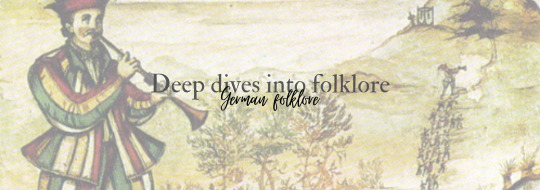
Embedded within the cultural fabric of Germany lies a trove of enchanting narratives, a testament to the nation's rich heritage and historical tapestry. German folklore, a captivating blend of ancient pagan beliefs, medieval epics, and timeless fairy tales, unveils a world steeped in myth and tradition. This essay embarks on a comprehensive exploration of German folklore, tracing its origins, introducing mythical figures, unraveling folk traditions, and assessing its profound influence on literature and popular culture. Within this intricate tapestry, the diverse tales of Germanic lore reveal not only the evolution of storytelling but also the enduring spirit that continues to captivate audiences across time and borders.
I. Ancient Roots and Pagan Influences:
Germanic folklore has its origins in the pre-Christian beliefs of the Germanic tribes. The pantheon of gods and goddesses, such as Woden (Odin), Thor, and Freyja, held sway over the imaginations of early Germanic people. The Eddas, epic poems preserved in Iceland, provide glimpses into the cosmology and mythology of the Germanic peoples, offering tales of creation, heroic exploits, and the prophesied end of the world, Ragnarök.
II. Germanic Mythical Figures:
The Nibelungenlied: The Nibelungenlied, a medieval German epic, tells the tragic tale of Siegfried, the dragon-slayer, and the curse surrounding the Nibelung treasure. This epic, with its themes of heroism, betrayal, and revenge, has left an indelible mark on German folklore and is a precursor to later literary works, including Wagner's operatic adaptation, "Der Ring des Nibelungen."
Brothers Grimm Fairy Tales: Perhaps the most famous collectors of German folklore, the Brothers Grimm, Jacob and Wilhelm, compiled a vast collection of fairy tales that have become timeless classics. Stories like "Cinderella," "Snow White," and "Hansel and Gretel" are embedded in global consciousness, showcasing the enduring appeal of German folk narratives.
III. Folk Traditions and Creatures:
German folklore is teeming with a diverse array of folk traditions and mythical creatures, each with its own regional variations. From benevolent spirits to malevolent beings, these entities populate the cultural landscape of Germany.
Kobolds and Elves: German folklore features kobolds, mischievous household spirits, and elves that are often associated with forests and natural landscapes. These beings, sometimes helpful, sometimes capricious, embody the close connection between the Germanic people and their natural surroundings.
The Lorelei: Along the Rhine River, the Lorelei is a legendary siren or mermaid who lures sailors to their doom with her enchanting song. This myth has inspired numerous poems and songs, becoming a symbol of the dangers and allure of the river.
IV. Impact on Literature and Popular Culture:
German folklore has left an indelible mark on literature and popular culture, both within Germany and globally. Beyond the Brothers Grimm's fairy tales, Germanic mythology has influenced literary giants like J.R.R. Tolkien, whose Middle-earth draws inspiration from Norse and Germanic mythologies.
Wagner's Operas: Richard Wagner's operatic masterpieces, including "Der Ring des Nibelungen" and "Tristan und Isolde," draw heavily from Germanic mythology. Wagner's reinterpretation of these myths has become iconic in the world of classical music and opera.
Contemporary Fantasy: German folklore continues to influence contemporary fantasy literature and film. Authors and filmmakers often draw on Teutonic themes to create worlds filled with magical creatures, quests, and epic struggles between good and evil.
German folklore stands as a testament to the enduring power of storytelling in shaping cultural identity. From ancient pagan beliefs to the enchanting tales of the Brothers Grimm, the narratives of German folklore have transcended time, leaving an indelible mark on literature, art, and popular culture. As these tales persist and evolve, they provide a window into the collective imagination of the Germanic people and invite ongoing exploration and reinterpretation in the ever-changing landscape of global storytelling.
Taglist (reply or reblog to be added): @axl-ul @crow-flower @thoughts-fromthevoid @alderwoodbooks @harleyacoincidence @tuberosumtater @sonic-spade @theonlygardenia @holymzogynybatman @nulliel-tres @w0rkah0licz @sylvanthorn @tigertaurus22 @profiterole-reads @mathias-musings @1899adgg1997tbmd @grimmparanormalinvestigations
#writeblr#writers of tumblr#writing#bookish#booklr#fantasy books#creative writing#book blog#ya fantasy books#ya books#writers block#national novel writing month#writers#teen writer#tumblr writers#writblr#writer problems#writerblr#writers community#writers corner#writers on tumblr#writerscommunity#writerslife#writing blog#deep dives into folklore#deep dives#german folklore#german mythology
21 notes
·
View notes
Note
okay so... give us the list of folk horror films that are good please. 🤲
ok this took a while but here we go! it ended up being more than 10 lol
the wicker man (1973) - the definitive british folk horror film. midsommar wants to be the wicker man soooo bad it's embarrassing
the blood on satan's claw (1971) - i haven't seen this one in a long time but it's a pretty chilling early 70s british film centring around a demonic cult in 18th century england
night of the demon (1957) - ok so you know the sample at the beginning of hounds of love by kate bush, where a voice says "it's in the trees! it's coming!" that's from this film!!!! just barely in the folk horror category but it's based on a story by m.r. james who is one of THE iconic folk horror writers so imo it counts
a warning to the curious (1972) - also based on a story by m.r. james, this was part of a long-running annual bbc series called 'a ghost story for christmas'. it's only about 30 minutes long and very dated but I think that gives it extra charm and even a bit of extra creepiness
the juniper tree (1990) - icelandic retelling of the grimm's fairy tale, starring björk and featuring an incredibly beautiful soundtrack
the company of wolves (1984) - based on the short stories of angela carter in her compilation 'the bloody chamber'. this is probably more fairytale horror than folk horror but i LOVE this film and if you like intense psychosexual overtones and incredible practical effects then you will too
the devil rides out (1968) - classic hammer horror with christopher lee so you know it's gonna be a banger
wake wood (2009) - probably the most underrated irish horror film of all time (and that's saying a lot bc there really aren't many). really scary film with the "came back but wrong" premise. watch this one
the hallow (2013) - another one from ireland. it's not amazing but including it bc i don't think i've ever seen another horror film fully embrace the idea that faeries are actually terrifying. practical effects are also cool as hell
kill list (2011) - i'll be honest with you I didn't understand half of what was happening in this film and it's been on my to-rewatch list for ages. it starts out as a cerebral cop drama and descends into absolute madness like it literally has to be seen to be believed
a field in england (2013) - probably the modern folk horror film that comes closest to what british directors were doing with the genre in the 70s. it's trippy, impenetrable and often kinda funny, i really recommend this one
pyewacket (2017) - offbeat canadian indie film that you will either find really creepy or really boring. i thought the ending in particular was incredibly chilling
the ritual (2017) - i feel like everyone has seen this film at this point but i had to recommend it anyway bc it blends folk horror with monster movie and it's super fucking terrifying. i also highly recommend the novel by adam neville which if anything is even scarier
the witch (2015) - again everyone has seen this and has an opinion but it's one of my favourite horror films of all time
pet sematary (1989) - the iconic stephen king classic that is still really scary to this day
pumpkinhead (1988) - another film that is super underrated imo. people who love the creature design in the ritual should remember the OG
men (2022) - controversial opinion perhaps but i think this film was actually kinda brilliant. if nothing else it is super twisted and horrifying
on my list of i haven't watched this yet but people say it's really good: penda's fen (1974), witchfinder general (1968), the lair of the white worm (1988) (i know i know i call myself a ken russell fan and i haven't even seen lair of the white worm)
a radio play: children of the stones on bbc radio 4 (available on spotify hee hee)
and a couple of books: fairy tale (1996) by alice thomas ellis, and the owl service (1967) by alan garner. the owl service is for kids but it really did a number on me aged 12 and it still holds up as a classic. I think there's an old bbc series but i haven't got round to watching it yet :)
41 notes
·
View notes
Text
hc that some fairytales or myths are just nations being drama kids
-America is behind Paul Bunyan. His height got exaggerated a bit, but some of his feats (most) weren't, and for a while he walked around with an ox behind him-and of course, because he's a nation that animal was not at all normal. He finally heard about the folktales and thought it was hilarious and kept right on with his stuff. I follow the HC that nations can teleport within their own countries so the tales of how he would walk to California or whatever from whatever
-Folks like Anderson and Lang just watched Denmark do a bunch of dumb shit to get inspiration. That time Denmark's head got too big so Finland and Sweden gave him some "new clothes", that time Denmark made Norway sleep on a giant matress pile because "only the real Norway would feel a pea through that many mattresses if I put it there".
-Meanwhile, that one time Norway left Denmark alone to manage their house is where "the husband who was to mind the house" came from. Norway still holds it over Denmark's head. Iceland wisely stayed out of it.
-Beauty and the Beast is just a really dramatized story about France and the time he tried to woo England. France is also behind Puss in Boots, or rather Picardy is.
-The Wonderful Wizard of Oz was a very wild dream America had. Alice in Wonderland- now that was England actually having that happen to him, but ofc the only ones that believed him are the other magic countries. Flying Mint Bunny actually comes from Wonderland.
-King Arthur was also just all England playing dress-up.
-Half of German fairytales are just Germany's older brothers being idiots. The Musicians of Brenen, that was three of the brothers deciding to go galivanting around the place for a bit. The Twelve Dancing Princesses was that one times twelve of the German nations got a bit too excited with a guy's twelve daughters. Hansel and Gretel- - yeah no, that was just Prussia and Austria being actual idiots.
-and that one Chinese folktale about the guy who left his body in care of his daughter while going to visit some friends and when he didn't come back on time the daughter burned the body- that was Japan following China's instructions to a T, to China's extreme annoyance.
#headcanon#hetalia headcanons#hetalia hcs#hws america#hws prussia#hws austria#hws china#hws japan#hws norway#hws denmark#hws england#hws france#fairy tales hc
16 notes
·
View notes
Text

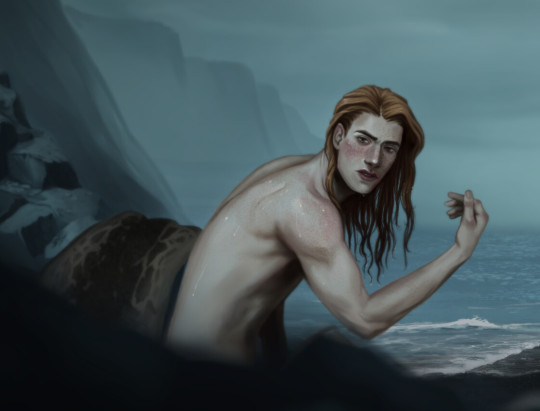
‘The Selkie’ by Jules McNamara
From the artist:
“ Selkies can be male or female, and are a shape-shifting creature from mostly Celtic Mythology, but can be found in Norse, Icelandic, and Faroese myth. There are contradicting accounts regarding how often they can walk on land, with popular tales saying once every seven years, but as with all folk tales, there is no right or wrong way to tell these tales.
“ The common denominator among selkie tales, though, is that they shed their seal-skin in order to walk on land. In some places where selkie myths are told, killing and eating seals is seen as an ultimate disrespect. Additionally, one of the ways birth defects were explained before the advent of modern medicine was to blame the fey, and sometimes children born with webbed digits were chalked up to be the offspring of selkies or their parents had disrespected a selkie. ”
42 notes
·
View notes
Text
Good Things In 2023
It’s that time of year again! Time to remember all the good things that happened in 2023. I’ve done this since 2017, and highly recommend doing this as a fun way to reflect (and to have something for future reference when you are feeling Down.)
woof ok here we go
PERSONAL
I visited two countries I haven't been to before: the Netherlands and Iceland!
The Netherlands: mostly Amsterdam but did also pop down to The Hague for a day. Did the Van Gogh Museum, the Anne Frank House, the Rijksmuseum, the Bloemenmarkt, a canal boat tour, the Royal Palace, the Mauritshuis.
Iceland: I was there for less than 48 hours but I saw THE NORTHERN LIGHTS!!!! they were subtler than I expected but so cool. also did the Perlan Museum and a Lava Show, which ruled.
Related: I turned 30 this year!
My dear friend Sam came to visit me in Dublin in June! The highlight of her visit was going with her to see Hozier at Malahide Castle.
Speaking of which, Hozier dropped UNREAL UNEARTH which isn't personal, per se, but is very personal to me
My sister visited me in November! We squeezed a lot in her time here, but highlights were Glendalough, the Hill of Tara, and the Galway Christmas Market.
A few aunts went on a trip to Ireland this fall and I joined them for a bit up in Donegal, as well as a day trip to Derry, which I'd not been to before.
Completely fucking forgot about this but I did write a 158k word long ROGUE ONE / FRINGE AU, ENDLESS FORMS MOST BEAUTIFUL. it was a real fuckin bitch to finish, let me tell you that
I got really into MISSION: IMPOSSIBLE over the summer (don't ask) and wrote a couple short pieces inspired by the most recent movie, DEAD RECKONING - PART ONE: LADY LAZARUS and WORTHY THE NAME OF SIR KNIGHT.
I jumped back on my bullshit in October and wrote a long, extended epilogue to my BINARY STAR SYSTEMS trilogy: TWO DESERTS. the way the series ended was always correct and good but it was fun to write this extended epilogue focusing on the fallout, the question of what it's like to live past the end of your myth.
Anything bolded below is something I particularly enjoyed and recommend.
MOVIES
2023 movies I saw and liked:
M3GAN
KNOCK AT THE CABIN
65
BONO AND THE EDGE, A SORT OF HOMECOMING WITH DAVID LETTERMAN
DUNGEONS AND DRAGONS: HONOR AMONG THIEVES
RENFIELD
THREE MUSKETEERS: D'ARTAGNAN
JOHN MULANEY: BABY J
SISU
THE LITTLE MERMAID
SPIDER-MAN: ACROSS THE SPIDER VERSE
ASTEROID CITY
INDIANA JONES AND THE DIAL OF DESTINY
MISSION: IMPOSSIBLE: DEAD RECKONING - PART ONE
BARBIE
OPPENHEIMER
PAST LIVES
ELEMENTAL
A HAUNTING IN VENICE
CHEVALIER
KILLERS OF THE FLOWER MOON
BOTTOMS
THE ROYAL HOTEL
DREAM SCENARIO
ANATOMY OF A FALL
THE HUNGER GAMES: THE BALLAD OF SONGBIRDS AND SNAKES
EILEEN
NAPOLEON
GODZILLA MINUS ONE
FERRARI
2022 movies I saw and liked:
TAR
THE LOST CITY
WOMEN TALKING
TV
THE LAST OF US
PEAKY BLINDERS
BOOKS
super embarrassing how few books I read this year:
"Survival of the Richest: Escape Fantasies of the Tech Billionaires" by Douglas Rushkoff
"Donegal Folk Tales" by Joe Brennan
"Listen to the Land Speak: A Journey into the Wisdom of What Lies Beneath Us" by Manchan Magan
"Hell Bent" by Leigh Bardugo
"The Book of M" by Peng Shepherd
"The World We Make" by NK Jemisin
"The Echo Wife" by Sarah Gailey
"Daisy Jones and the Six" by Taylor Jenkins Reid
"White Cat, Black Dog: Stories" by Kelly Link
"Yellowface" by RF Kuang
"Ithaca" by Claire North
"Killers of the Flower Moon: The Osage Murders and the Birth of the FBI" by David Grann
"A Heart That Works" by Rob Delaney
"Rebecca" by Daphne du Maurier
"The Crying Book" by Heather Christie
"In the Dream House" by Carmen Maria Machado
"Rogues: True Stories of Grifters, Killers, Rebels, and Crooks" by Patrick Radden Keefe
"Fleabag" by Phoebe Waller-Bridge
"The Hurricane Wars" by Thea Guanzon
OTHER GOOD THINGS
*some of these things are Good as in well-written or well-made, but maybe not Good in topic.
"Eurydice" by Adrienne Su
"What Happens to a School Shooter's Sister?" by Jennifer Gonnerman for The New Yorker. A high school student murders his parents and several students at his school, and his sister is left to pick up the pieces. really powerful story on unconditional love.
"A Friend Died, Her Novel Unfinished. Could I Realize Her Vision?" by Leslie Jamison for The New Yorker. the grief of losing not only a dear friend but her art as well.
"Fuck you, I don't know?"
Werner Herzog pronounces Eeyore.
George Washington's Dream for America, an SNL sketch.
Judi Dench performs Shakespeare.
"Walking Brittany Home" by Devin Faraci for Washington Post. a really beautiful piece on death and love.
This thread on the struggle of trying to be fashionable in Ireland.
"The Return of the Marriage Plot: Why everyone is so eager for men and women to get hitched" by Rebecca Traister for The Cut.
"We Were Never Supposed to See Our Own Faces This Much" by Lola Christina Alao for Dazed Digital. on social media and personal reflection.
sunwoof
this story about Jimmy Buffett I loved
"She Wasn't Able to Get an Abortion. Now She's A Mom. Soon She'll Start Seventh Grade" by Charlotte Alter for Time. the cruelty is the point.
had a pilot named Ken yesterday and he introduced himself by saying his job is plane
"Cillian Murphy might be the star of a massive movie atm but to me he will always be the guy that showed up in the rain to our abortion rights marches"
"The 'Troubling Reverberations' at the End of OPPENHEIMER, Explained" by Bilge Ebiri for Vulture. it's an absolutely devastating ending, but the fact remains: there was no other way to end it.
this obituary for the great Sinéad O'Connor.
Kiké Hernandez returned to the Dodgers!
this behind the scenes video from the filming of MISSION: IMPOSSIBLE: DEAD RECKONING - PART ONE where Tom Cruise's co-stars watch him drive a motorcycle off a cliff.
"How Christopher Nolan Learned to Stop Worrying and Love AI" by Maria Streshinsky for Wired. good interview with Nolan, one of my favorite filmmakers / artists. (anyone who's ever read anything I've written is probably like yes, this is very obvious.)
"The Perils and Promises of Penis-Enlargement Surgery" by Ava Kofman for The New Yorker. an absolutely BONKERS but super important piece!
a new ending to RAIDERS OF THE LOST ARK, lmao
"The Return of Ryan Gosling" by Zach Baron for GQ. really great profile writing going on here!
"LOST Illusions: The Untold Story of the Hit Show's Poisonous Culture" by Maureen Ryan for Vanity Fair. LOST is one of my favorite shows and has been super influential on my work. (again, this is probably very obvious). this piece is devastating in how it reveals the terrible racism and sexism behind the scenes of a show I have loved. important.
Henry Kissinger died this year (GOOD THINGS BABYYY) and this piece by Nick Turse, which came out in May, is a good explainer on why that's such good news: "Kissinger's Killing Fields".
"Talking With 'Swiftie Dads' at a Taylor Swift Concert" by Eileen Cartter for GQ. I thought this was very sweet.
The New York Times had an interactive feature about Connie Chung and her impact on young Chinese-American women, particularly the ones named after her. I love this video of her meeting some of them.
"Will A.I. Become the New McKinsey?" by Ted Chiang for The New Yorker. Chiang is best known as the writer of STORY OF YOUR LIFE which was adapted into ARRIVAL, so it's wise to listen to him when it comes to tech and science.
Loved this speech Mark Hamill gave about Carrie Fisher at her Hollywood Walk of Fame induction ceremony.
Accents white people can still do.
this absolutely incredible slapstick esque unintentional comedy scene.
As always, tagging anyone who’d like to do this!
@magalis @callioope @earnestfeeling @illuminahsti @fortysevenswrites @vaderkat @leaiorganas @garethsedwards @rifle-yes @buffyrat @alittlemomentum @i-am-slain @rogue-rook
13 notes
·
View notes
Text
I have indeed fallen into Hilda hype and theory time - and now I cannot get out.
Ok ok, i've been just doing some minor research from my end ~ tho it's nothing new, I think folks already figured this all out xD but this tumblr is for my fandom blabber, so here enjoy.
This is the synopsis for season 3;
Hilda returns, eager to escape the bustling city of Trolberg for a refresh. She embarks on a train with Mum, Frida, David and of course her bold sense of adventure. In Tofoten, Hilda is encouraged to lean into the soft living of this sleepy town by her quirky Great Aunt Astrid – walks by the river, delicious baking, local shopping. But this quiet lifestyle is quickly interrupted when Hilda gets a whiff of something mysterious nearby: a Fairy Mound! Her curiosity leads to more than just an adventure and a new creature-y friend… But to an eerie landscape where danger lurks in the shadows. The third season will uncover truths never explored before in the series!
and this is what I found on nordic fairy type creatures, called Huldufólk:
Huldufólk[a] or hidden people are elves in Icelandic and Faroese folklore. They are supernatural beings that live in nature. They look and behave similarly to humans, but live in a parallel world. They can make themselves visible at will. Konrad von Maurer cites a 19th-century Icelandic source claiming that the only visible difference between normal people and outwardly human-appearing huldufólk is, the latter have a convex rather than concave philtrum below their noses.
In Faroese folk tales, hidden people are said to be "large in build, their clothes are all grey, and their hair black. Their dwellings are in mounds, and they are also called Elves. "Some Icelandic folk tales caution against throwing stones, as it may hit the hidden people.
Sorry, but the mention of 'mound' in both, hidden world kinda fitting the vibe of Tofoten, Huldufolk being nature beings (we see mushrooms and nature all around the poster), human like?!?, large in build - clothes ALL GREY.
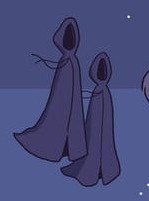
don't these two sorta fit that last description?!
Also the 'creature-y' friend bit in the synopsis... like, is a clear sign the creature in say is most likely a human like creature who isn't ofc human. Tho this could also refer to the weird yellow birb creature from the poster - or the merman from the tie-in book that's coming out soon.
#hilda netflix#hilda the series#hilda theory#spoilers#I really wanna know who the fairies will be and how they will look like cause I like mythical creatures and Hilda has some neat creatures
11 notes
·
View notes
Text
Stupidly long playlist to go with the stupidly long fic. In short, it follows a kind of meandering path from Icelandic youth to swaggering mercenary behaviour on the continent, to service in the Varangian guard in Constantinople. It is very much in an order I chose, and should be listened to in order. I designed it to have them coming closer together and parting ways at various points, and it follows a very rough outline I have for three 'books'' worth of adventures.
Bit more info about each track under the cut, but basically it's Weird FolkTM, Icelandic rock, a smattering of prog, and some entirely self-indulgent pop picks.
Sumer is icumen in - you may know from Wicker Man soundtrack? Everyone's go to creepy folk song because it's one of the oldest. Included because of cuckoo theme.
Kólbítur - Icelandic term for 'coal-biter', a character type in medieval stories and folk tales. Usually a lazy boy who rolls around in the hearth ashes as a child getting in the way of the women. After some trauma he is usually revealed to be a great hero, who just needed a bit of goading on.
Vísur Vatnsenda-Rósu well known Icelandic ballad, full of longing and intertwined personhood: 'mine was yours and yours was mine'.
Nitlayokoya - kind of a spoiler for the fic, but Cassian isn't actually a 'skraeling' (Norse name for the American peoples encountered around Newfoundland), he's from...way further south. This song has the same title as poem by Nezahualcoyotl, meaning 'I am Sad', though this wasn't composed until the fifteenth century.
Get Out of My House is based on The Shining, so there's the link to Native American land, and there's shapeshifting in the song too. Seems a good angry bb Cassian song.
Filthy Game a stranger and a good man gets drawn into the locals' 'filthy game'.
The Devil & the Huntsman mainly for the Sam Lee, but also a rollicking banger from the King Arthur soundtrack. Vibes.
The Dark general foreshadowing and vibes.
Don't Say No - there's a lot of Patrick Wolf on there, this is early Patrick Wolf urging us to run with our instincts :)) and teeth.
Shapeshifter there's also a lot of Richard Dawson in various iterations on here because he does Weird Folk like no one else. Shapeshifter so impressive he's even handing out potatos pre-Colombian exchange.
Pagan Poetry best fucked up Björk song everrrr. 'He makes me want to hurt myself'.
To Try for the Sun just boys being lads, sharing coats and hanging out on the streets, nothing to see here.
Teardrop this is how you do a cover.
Theseus 'A black sail billows, the sun hits your blade / And you are hungry, you are hungry for you'.
Jolly Bold Robber I love the way Nic Jones sings this. A 'jolly bold robber' attacks a young sailor who's just come ashore with his earnings and they fight - moral is don't fight a desperate sailor who wants to spend his shore leave well. But the way Nic Jones sings 'like lambkins they've stripped' sure is something. And the apology in the sailor's voice for killing his attacker. Feels very Cassian.
Two Brothers - any folksong 'and they were brothers' me: 'what if they were ""brothers""?' Here with wrestling matches, bruised egos, pocket-knife stabbings and regret.
The Best Excuse in the World I remember seeing this live and David Rotheray explained it as being about a gay man realising he has 'the best excuse in the world' for not loving his wife, but the way Jim Causley sings it erases any of the triteness of that, it's gorgeous.
Go Your Way classic 'I love you so much I'm letting you go' folk song.
Nonantzin another Nezahualcoyotl poem, this one asking mother to cry for her child when he dies.
Crown Shyness is just one of my Brassian songs. Growing up together but not quite being brave enough to reach out to each other.
Raincatchers ditto, also shut up I love it.
We used to be the raincatchers
And we couldn't see what we were running from
You made me feel like
Nothing really matters
Here in my dreams, we're raincatchers
Come back to me like it was before
You made me feel like
Nothing really matters, nothing really matters
If we let this run
Caught on a river
Everything that we left unspoken
Will never be said
Revenge of the Bear instrumental, for the title mainly. Who could it refer to, you ask?
Animalia whaaaat it's from the soundtrack to my favourite film, also fucked up love and animal imagery.
Daring Highwayman getting into the Norwegian/continental mercenary/troublemaking part of their careers now, Cassian definitely makes robery seem cool.
Hare Spell he also makes shapeshifting seem cool. Because it is.
Stendur æva is about nine minutes long but it's essential I'm afraid. Played on a glockenspiel made from Icelandic rock, I usually LOATHE your man from Sigur Rós and his squeaky voice, but he sort of sounds like a seagull in this, and it features the then head of the Icelandic folk singing club, who has a lovely voice. It's all bullshit medievalism about 'Odin magic' but it sounds fucking amazing. VIBES I SAY.
Trøllabundin this is tumblr, you all know about Eivør Pálsdóttir here, right?
Ogre more Richard Dawson! But this time the community is not so happy with the outsider figure on its edges.
Twa Corbies is a pan-European folk song with pretty old roots. Pov: you are a corvid observing the body of a dead knight.
Villon Song high medieval roots for this poem about all the cool things you can do to break the law.
Bwganod Richard Dawson AND FRIENDS this time. The title is Welsh for 'scarecrow', which doesn't really have any bearing on things, but the following lines are just relevant, ok
Always jokey-woking
‘Til the shit hits the fan
Spray my face in fertiliser
Grow a mos-toosh
Hairy pits
Super fit
Built like a brick shit
Wearing leopard-print
Fishnet underpants
I’m on the run, Barely began
Gathering sun, but I’ll take my time
I’m overrun
The damage is done
Everyone’s gonna sink into the slime
Hellismanna kvæði for the 1990s girl rock!! Also it's an outlaw song.
Strákarnir á Borginni means 'the boys on the town' and is a camp tango about the hypocrisy of 1980s homophobic farmers in Iceland. I've posted it here before, it's iconique.
Fin Cop a more tragic outlaw song. Nobody loves a troll.
Escape oh just for the Vibes, because Plunkett & Macleane has the energy I want my outlaw saga to have.
The Night Safari much more recent Patrick Wolf about love not being enough to stop self-destructive tendencies. Also shapeshifters.
Excuse me
While I shift shape
The ocelot
Slips the bowline knot
But soon falls to prey
As a boy I worshipеd the thunder
Now it's just a sky under
I wait for to fall
No why only whеn
Still Too Soon to Know yes yes blorbo got on the playlist. Pleasingly few pronouns in this. After all they've been through, surely Brasso would know?
Á Sprengisandi is a jolly Icelandic folk song about riding across the highland interior on the main path. There's unclean spirits! Outlaws! Elves! All those fun guys.
Ten Thousand Miles just another nice travelling song :))
Oh come ye back
My own true love
And stay a while with me
If I had a friend
On this Earth
You've been a friend to me
Dodona more recent Patrick Wolf going through it.
Night Ride Across the Caucasus I'm not sure yet precisely what route they'll be taking by this stage but you've gotta have some Loreena on a medievalish playlist.
Anyone But Me what pining would be complete without some jealous misunderstandings? This is such a sinister and sexy song of obsession and it's a fave.
Ivy to go with the general move towards the cradle of ancient civilisationTM this is more Richard Dawson (and DIFFERENT friends, these ones Finnish metalheads) this time telling Dionysus's story.
Hey Matt if you can take me at my best you can take me at my Darren Hayes-est, gay angstiest:
Hey Matt
The water carried all my secrets
Sifting through the muck I saw my dirty little grievances
And the memories I killed
All the shameful feelings spilled
Lay bare on the asphalt
Broken parts I thought I'd drowned real good
Oops! I Did it Again it's a Cassian song, ok?
Nikitoa last of the songs with a title matching a poem by Nezahualcoyotl, this one about the transience of all things :))
Móðir mín í kví kví what if we made this lullaby into a girl screamo track? Vibes, I say again.
Feet of Clay more on the topic of not being able to make a move despite wanting to.
Whispering Light the version with Willy Mason.
Distance, mark of distance
Your burden is your brilliance
There's a vessel
A hiddеn vessel in the stonе
Difference, not indifference
Your passion marks you different
And you wrestle
And how you'll wrestle to come to know
The Gates of Istanbul more Loreena! Constantinople, but, well, I don't need to quote They Might Be Giants.
Shim El Yasmine It might not be Istanbul but let's get some Arabic language angst about leaving your boyfriend behind in anyway.
Last Polar Bear it's about the long overdue proliferation of contemporary queer folk singers actually. Also bears. From the north. Make you think of anyone?
The Moon Shone on my Bed Last Night sneaking some more Sam Lee in for the 'muckle ballad' about being with your lad no matter what.
Stál og hnífur this is what happens when you leave the pronouns out, Bubbi!
Steel and knife is my symbol,
the symbol of travelling workers.
Yours was mine and mine was yours
while I lived among men.
Fire Light soothing. Good vibes. Hopefuly. Probably a happy ending, through I'm a long way from knowing how I'll achieve it yet. What is the medieval equivalent of a Death Star?
Over Again haha is it all a flat circle? Or once free to be together to they just go out robbing and causing trouble again? :)
#my playlists#brassian#brassian saga au#saga au#music recs#my wips#i am so proud of this four hour monster really i do spend a lot of time listening to it#lyrics#Spotify
9 notes
·
View notes
Text
2022 Reading Log pt. 21
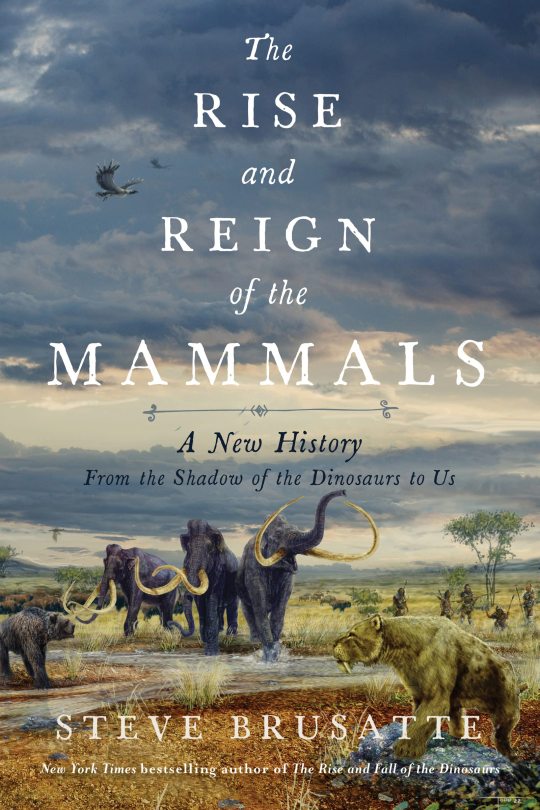
101. The Rise and Reign of the Mammals by Steve Brusatte. This book covers mammalian evolution throughout synapsid history, starting in the Carboniferous and ending in the present day. There’s a lot of good information in here, both about the species themselves and the history of their discovery and discoverers. But I found the authorial voice consistently off-putting. Brusatte writes about evolution alternately like a war or a poker game, and there are constant references to dominating, beating or tricking other lineages, particularly dinosaurs. After crowing about how mammals survived and thrived in the Mesozoic by exploiting small body sizes and niches like eating seeds and insects, he dismisses all of bird evolution (which in the Cenozoic did the same thing) in a paragraph, and never talks about Cenozoic animals other than mammals at all. What’s weird is I don’t remember his previous book, The Rise and Fall of Dinosaurs, being so mercilessly jingoistic about its focus clade. Maybe the publisher told him to write more enthusiastically about a “less exciting” group; maybe it’s the zeal of the newly converted (Brusatte was primarily a dinosaur paleontologist until relatively recently); maybe the first book was this annoyingly written and I have forgotten.

102. The Accidental Ecosystem by Peter S. Alagona. This book is a short overview about how wild animals have moved into American cities, why American cities developed into places where animals can thrive, how humans are reacting to these and how we should in the future. The tone is generally optimistic but realistic—that cities can serve as oases of biodiversity during climate change and extinction events, but a world with only rats, crows and sparrows would be a depauperate one. Most of the book is organized around an incident of some charismatic megafauna making the news (like Pedals the bipedal bear of New Jersey, or a nesting pair of bald eagles blithely feeding their chicks fresh kitten), and then talking about that species in greater context. I’ve read several other books recently about human/animal interactions, and this one did the best job at being inclusive, talking about how parks can and have been used as agents of gentrification, the impact of economic decisions on the fate of cities and animals alike, and existing biases within ecology and evolutionary studies. Highly recommended.
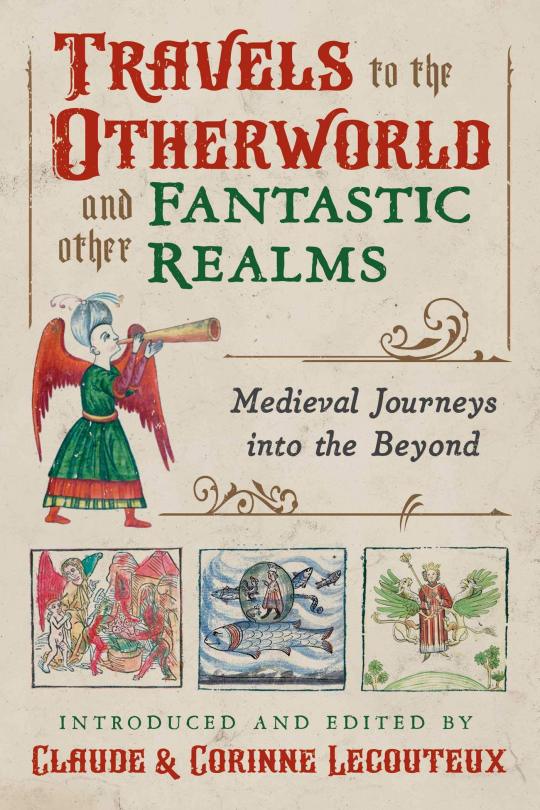
103. Travels to the Otherworld and other Fantastic Realms, edited by Claude and Corinne Lecouteux, translated by Jon E. Graham. This is a collection of medieval European fantastic literature, although not all of it is necessarily fantasy in the modern sense. Some are religious visions, others historical fantasies, others excerpts from novels and folk tales. All of them are wild. Both as a look into the medieval mindset and for their various bizarre creatures and occurrences. Some highlights include multiple versions of the adventures of Alexander the Great, the Vision of Tundale, a German journey through Hell that’s much gnarlier than anything in Dante, and the adventures of Marcolf, the Sherlock Holmes to King Solomon’s Watson (!). Also highly recommended; this might be the most fun I’ve had with a book this year.

104. Empire of the Scalpel: The History of Surgery by Ira Rutkow. Just what it says on the cover. The book starts with trepanations of cavemen and progresses to the modern era. Rutkow follows the Great Man school of history, and many of the chapters are biographical sketches of a surgeon who was important in developing the field. It feels somewhat incomplete—not only are non-surgical advances in medicine basically ignored, the development of the modern American insurance state is glossed over, even as the book discusses how hospitals became prestigious institutions and surgeons very wealthy. The book also uses weird kennings, as if it were written by an Icelandic skald—surgeons are “scalpel wielders” or “students of the knife”, etc, as often as they’re just surgeons. I definitely learned stuff from this book (like the quack “orifical surgery”, which posed that all diseases could be cured by cutting out irregular shapes from the mouth, nose, anus and genital openings!), but found the book rather less than the sum of its parts.
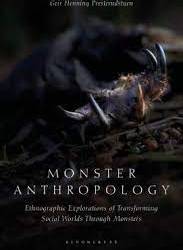
105. Monster Anthropology, edited by Yasmine Musharbash and GH Presterudstuen. This is a collection of academic essays about monsters as cultural signifiers and participants. After a very good introduction (the Works Cited of which will keep me busy a long while), the bulk of the book looks at particular cultures and particular monsters. The book was published in Australia, and several of the essays are on the same group of Indigenous Australians, the Warlpiri, and their monsters (most of which have not penetrated Western consciousness, but the pankarlangu is starting to make some inroads). One minor note I found interesting—there’s an actual folkloric monster that fits the D&D concept of a rakshasa! The tepun of the Eastern Penan people in Borneo is a shapeshifting hedonist that has aspects of humans and tigers.
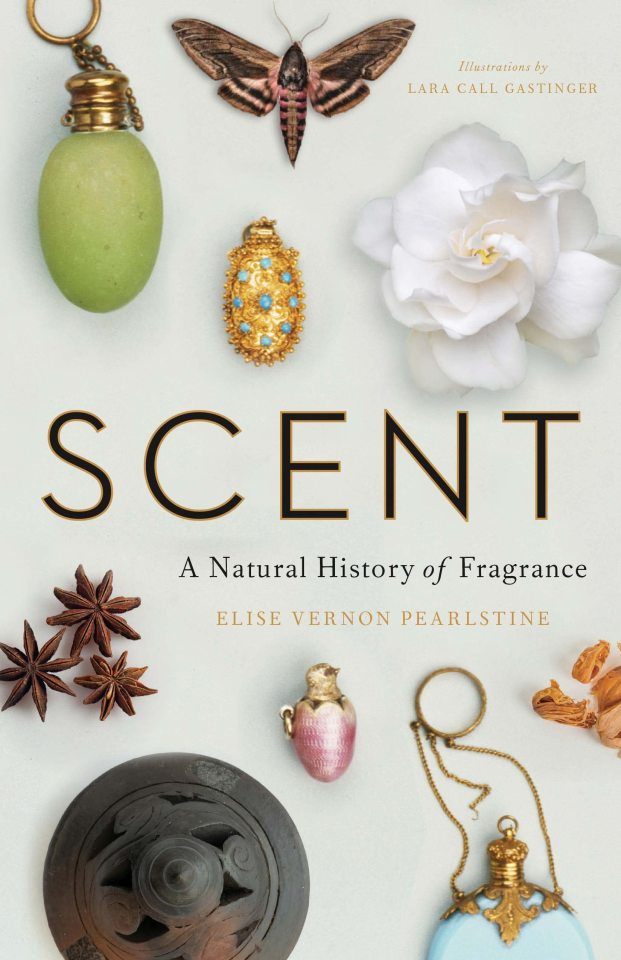
106. Scent: A Natural History of Fragrance by Elise Vernon Pearlstine. Gave up on 50 pages in. The book purports to be a natural history—what molecules are made by what plants, why, and how those plants live. The actual contents contain some of that, but much more cultural histories. I’ve read and enjoyed several books about the cultural history of plants recently, so I’m not inherently opposed to the concept. But the book is incredibly poorly organized. The narrative skips back and forth through time and space and species, words are used and then defined several pages later as if it’s the first time we’re seeing them, concepts will be repeated multiple times to the point of redundancy, and the preface and introduction contain the exact same sentences, twice! The fact that this book was published in this state is frankly embarrassing.
#reading log#bad books#botany#cultural history#paleontology#stem mammals#prehistoric mammals#anthropology#monster books#surgery#medical history#european folklore#medieval folklore#ecology#urban ecology
91 notes
·
View notes
Text
I have a new book out!
My brand new short story collection is now available:

What You Wish For: 5 Fantastical Short Stories
A wish is a wish.
What do we wish for, from genies, leprechauns, sphinxes, and other mythical creatures? Or simply from each other? And is what we wish for really what we want?
In this collection of five fantastical short stories, people have their wishes turned upside down, sideways, and inside out - and nothing is how it might seem.
📚 You can add it on Goodreads:
https://www.goodreads.com/book/show/196029231-what-you-wish-for
📖 And read it on Kindle:
https://www.amazon.com/dp/B0CF7W3PJH
My first short story collection is of course also still available:

Tröll, Álfar, Hestar: 3 Magical Short Stories Inspired by Iceland
What if all the myths and legends surrounding Iceland are true? What if there is a troll under every bridge, elves hidden behind the veil, and wicked horses lurking in the water? In this adventurous, romantic, and magical collection of three short stories, fantasy collides with reality, as tourists and travelers experience a modern take on Icelandic folk tales.
📚 On Goodreads:
https://www.goodreads.com/book/show/62227643-tr-ll-lfar-hestar
📖 On Kindle:
https://www.amazon.com/dp/B0BCQS7G5M
✍️ More about me and my stories can be found on my author website: https://sjcschreiber.com/
#writeblr#writers on tumblr#short story#short stories#ebook#book#books#self published#kindle unlimited#writing#author#indie author#fantasy
6 notes
·
View notes
Photo

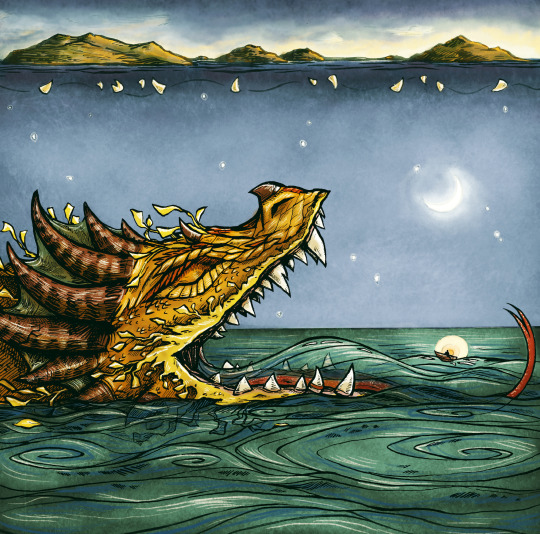
The Mester Stove Worm [Orcadian/Scottish mythology]
Have you ever wondered why Iceland has such active volcanoes? According to an old Orcadian legend, that is because the burning carcass of a giant dragon lies buried beneath it.
Stove worms were giant dragon-like creatures that lived in the ocean, according to Orcadian folktales. Whereas Dennison referred to these creatures as ‘stove worms’ I find that all later sources call them ‘stoor worms’ and I wonder where that difference came from. Nevertheless, the Mester Stove Worm (‘mester’ simply meaning ‘master’) was the biggest and most dangerous of them all. Colossal and vile, the creature was referred to as the most terrible out of all the animals in the world. It was thousands upon thousands of miles long, and had a giant forked tongue that reached several hundreds of miles in length. With this tongue, it swept entire villages into the sea. In addition, the creature could poison the land with its noxious breath, which brought pestilence upon the people and blighted crops. The monster was not born via natural means, but was brought into being by mysterious and malicious spirits.
It was eventually slain in the tale of Assipattle, a local folk character. The story is so stereotypical of fairy tales and common tropes (the hero slays the dragon with trickery rather than strength, and gets to marry the beautiful princess he saved as a reward) that I originally assumed it was a modern story. Keep in mind though, that I found no sources predating Dennison’s 1891 retelling of Orcadian mythology, and he cited no source himself, instead claiming that the story was told to him as a child.
Regardless, the story goes like this:
When the Mester Stove Worm appeared near the coast, the people had to bring it an offering of seven virgin maidens every week. If they failed to do so, the monster would blight the land. Although the offerings prevented the monster from destroying them all, it was not a sustainable solution, for eventually the land would run out of fair maidens. So the people sought the council of an old learned wizard. The mage was a prophet and foresaw that if the king’s daughter was fed to the dragon, it would leave and not return. The king reluctantly agreed, for although she was his only child, he had to save his country. But he asked for 10 weeks of respite, during which he sent out messengers to other countries with the promise that if a hero managed to slay the monster, he would be wed to the princess as a reward.
No one took the offer, because no man dared to fight the humongous creature. But Assipattle, the hero of the story and a poor peasant boy stood up against the worm on the final day. He steered his boat right into the gaping maw of the creature, and ventured into the bowels of the monster, carrying a kettle with peat. Eventually he made his way to the creature’s liver and set fire to it with his burning peat, for indeed the liver was full of oil and instantly caught fire.
After escaping the monster, Assipattle witnessed the colossal creature convulsing in agony. Its death spasms were a sight to behold as the monster slashed with its colossal tongue, reaching all the way to the moon, and eventually made a deep slit into the ground with its tongue. This gap filled up with water and is now the gulf that separates Denmark from the other Scandinavian countries.
Still convulsing in pain, the dragon shed its huge teeth. They fell into the sea and became the Orkney islands. Then, it threw its giant head into the sky and came down, again shedding some teeth. They became the Shetland islands. After shedding teeth for the third time, the Faroe islands were formed.
Finally, the Mester Stove Worm coiled up and died. Its corpse became the island of Iceland, and the huge conflagration in the creature’s liver is still burning deep beneath the surface of that land, which is why there are so many active volcanoes in Iceland.
Modern retellings of the story add elements that showcase the hero as a trickster: he stole the king’s boat by tricking the guard, he stole his father’s horse with a similar trick, etc. I do not know how old these subplots are or when they were added to the story, so they might not be modern additions at all.
Sources:
Dennison, T. W., 1891, Orkney Folklore: Sea myths, in Scottish Antiquary: or Northern Notes & Queries, Edinburgh University Press, 5:19, 130-133.
Forrester, K., 2016, Celtic Tales: Fairy Tales and Stories of Enchantment from Ireland, Scotland, Brittany and Wales.
(image source 1: Bo Myles on Artstation)
(image source 2: folklorescotland.com)
#Orcadian mythology#Scottish mythology#dragons#sea monsters#aquatic creatures#monsters#mythical creatures#mythology#myths
72 notes
·
View notes
Text
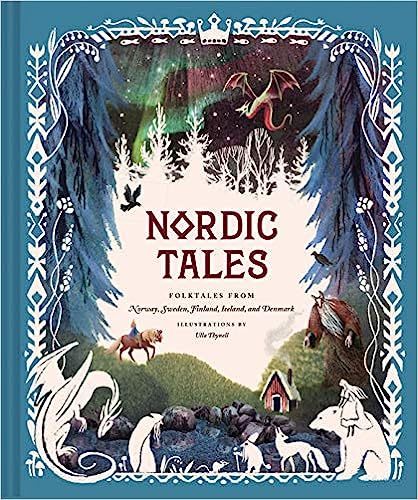
Nordic Tales: Folktales from Norway, Sweden, Finland, Iceland, and Denmark
A deluxe volume of 16 traditional Nordic folk tales that is sure to impress any fan of cultural and mythological literature with impactful and stunning illustrations by contemporary artist Ulla Thynell.
Welcome to a world of mystical adventure—where trolls haunt the snowy forests, terrifying monsters roam the open sea, a young woman journeys to the end of the world, and a boy proves he knows no fear.
Translated and transcribed by folklorists in the 19th century, this collection of traditional tales from the enchanting world of Nordic folklore comes to life with glowing contemporary illustrations that conjure dragons, princesses, and the northern lights. At once magical, hilarious, cozy, and chilling, Nordic Tales will enthrall fairy tale fans and captivate those interested in the rich history of Nordic culture.
https://amzn.to/3NTbx2g
6 notes
·
View notes